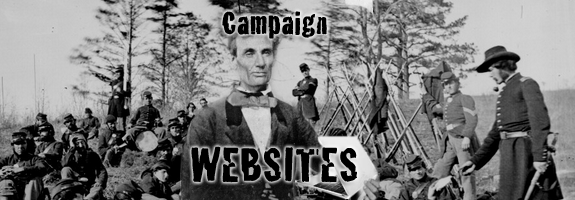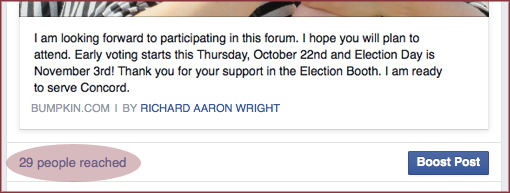Canvassing for votes is best done with a good campaign website and social media aggregation strategy. The five reasons to set up a campaign website are to educate voters, to motivate voters, to solicit votes, to centralize media and to show leadership. And don’t forget the importance of registering your domain names early and taking necessary security and legal precautions, too.
1. Educate Voters
While content is king for candidates who have set up a campaign website, Thought Leadership is the queen bringing legitimacy to the campaign as a whole. Education begins with an acknowledgement of the candidate’s background, mission and current activities within an event calendar. The website (rather than a Facebook page) is where journalists and constituents will go to find the detailed biography and background information on the candidate. Set up a campaign website to educate voters accordingly.
2. Motivate Voters
By capturing email addresses and posting periodic updates via social media and email newsletters, the education of voters will be assured while motivating them to vote can also be undertaken. Motivation to find the polls sometimes lacks for voters who feel their vote can’t make a difference. Set up a campaign website with motivation in mind, reminding readers “every vote counts” and “without their votes the election cannot be won.” Less than 15 percent of eligible voters actually make it out to vote, on average, so consider ways to motivate these voters using traditional mechanisms, for instance giving incentives such as barbecue picnics, free schwag (tee shirts, buttons, etc.) and guilt trips.
3. Solicit Votes
In local elections where victory is often measured in the hundreds, political rallies and canvassing at polls on election day are crucial to securing victory. Send out an eBlast the day before election day to spell out what it is a registered voter needs to do. Also, provide links on the website with tools for citizens to get registered in the first place. And don’t forget about the tried and true practice of phone calls. More than half of older Americans vote, a demographic that tends to learn about candidates through traditional media venues including print as well as email. Make your headline: “I’m asking that you vote in tomorrow’s election” clear.
4. Centralize Media
To help win an election for the candidate, website managers should combine social media feeds into the front page of the campaign website while ensuring your blog posts on the website are posted back to Facebook. Facebook is fast becoming the originator of organic clicks, measured by the number of “Likes” and tallied by Facebook to show the number of views on a site. Set up a campaign website with a Social Media Aggregator such as Hootsuite or BufferAp. Pushing content in parallel to multiple outlets shows organization and will maximize the impact of the content produced.
5. Show Leadership
The tone of a website and social media should not be too lighthearted or lacking the qualities of leadership. It is generally agreed there are eight favorable qualities in a leader: Honesty, Ability to Delegate, Confidence, Commitment, Creativity, Intuition and the Ability to Communicate and Inspire. Abraham Lincoln, for instance, is best known for his honesty, listening skills and master oratory prowess. Emulate the tone of your favorite leader and set up a campaign website to reflect those qualities.
Security and Technology is Important
Demonstrating good practices in technology will protect a website from politically motivated hackers while satisfying legal requirements. For instance, legal verbiage must be placed on the footer of each web page and within each social media page. While there are few guidelines for exactly how and where to place “PAID AND AUTHORIZED BY COMMITTEE TO ELECT JOHN DOE”, cover yourself by posting the statement everywhere there is white space.
National attention to website and email security came into effect during the campaigns of Hillary Clinton and Donald Trump. Failing in basic privacy and consumer protection practices within a candidate’s Internet technology presence can be catastrophic.
Demonstrate Domain Name Competency
Politicians should use a dot-com for their website. The dot-coms can be registered for less than $10.00 each using most domain registrar services, so snap up as many as you think will come in handy before you set up a campaign website.
Finally, the ability to update your website and social media posts regularly and with focus to attention can be the difference between winning and losing. Scheduling posts and ensuring these posts have been reviewed by an editor will show organization and commitment in itself. A strong Internet presence with technology driving a candidate’s message will make the difference between that candidate’s winning or losing.



